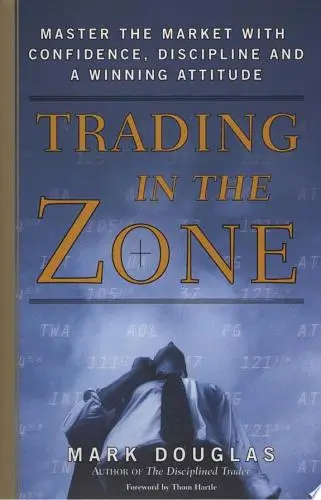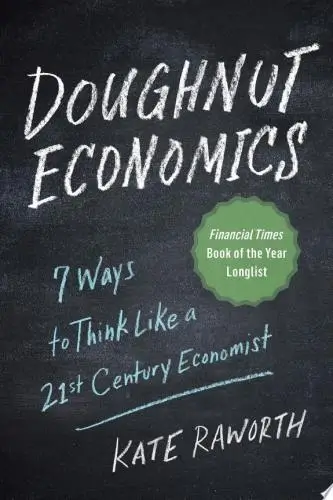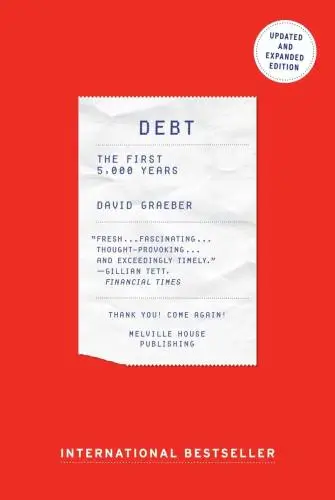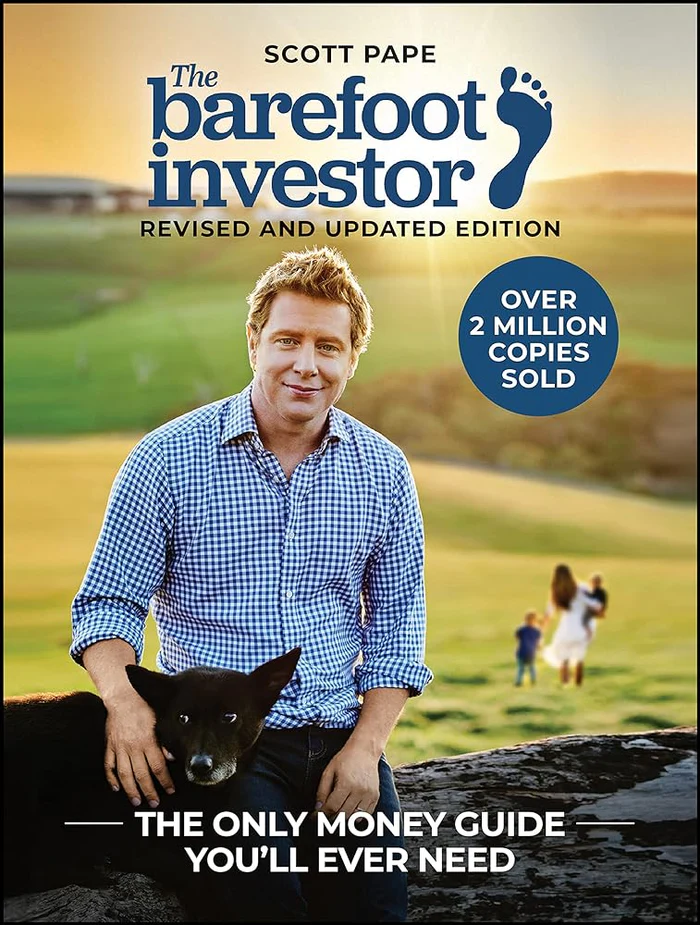The Simple Path to Wealth
Your road map to financial independence and a rich, free life
What's it about?
The Simple Path to Wealth offers a straightforward guide to achieving financial independence through savvy investing. It demystifies the world of stocks, bonds, and retirement funds, making it accessible for everyone. With a focus on low-cost index funds and the importance of avoiding debt, Collins presents strategies that emphasize long-term growth over quick gains. You'll learn how to manage your money effectively, make smarter investment choices, and set yourself on a path towards a secure financial future with ease and confidence.
About the Author
J L Collins is an author and financial advisor best known for his book "The Simple Path to Wealth." His writing focuses on personal finance, investment strategies, and the importance of financial independence. Collins' work is characterized by its clear, straightforward approach to complex financial concepts, making them accessible to a wide audience.
10 Key Ideas of The Simple Path to Wealth
Embrace the Power of Compound Interest for Long-Term Wealth Accumulation
Compound interest, often referred to as the eighth wonder of the world, is the process where the interest you earn on an investment also earns interest over time.
This concept is crucial for building wealth because it allows your investments to grow exponentially.
By investing early and consistently, even small amounts can turn into significant sums over decades, thanks to the power of compounding.
The key is patience and a long-term perspective, allowing your investments to grow undisturbed.
Learn DeeperStart Investing Now: The sooner you begin, the more you can leverage the power of compound interest. Even if it's a small amount, start investing in a diversified portfolio or a retirement account like a 401(k) or an IRA.
Automate Your Savings: Set up automatic transfers from your checking account to your investment account. This ensures you consistently invest and don't miss the opportunity to make your money work for you over time.
Reinvest Dividends: Instead of taking out any dividends you earn, reinvest them. This increases the amount of money that is compounding, accelerating your wealth accumulation.
Keep Costs Low: Opt for low-cost index funds or ETFs. High fees can eat into your returns and significantly reduce the amount of money that benefits from compound interest over time.
Stay Patient and Disciplined: Avoid the temptation to dip into your investments. Remember, the key to benefiting from compound interest is time. The longer you allow your investments to grow, the more significant the impact of compounding will be.
- Example
If you start investing $200 a month at the age of 25 in a low-cost index fund with an average annual return of 7%, by the time you're 65, you could have over $500,000, thanks to compound interest.
- Example
Consider someone who invests $5,000 annually in an IRA starting at age 30. Assuming an average annual return of 8%, by age 60, this person would have contributed $150,000 but, due to compound interest, could have an account balance exceeding $700,000.
Invest in Low-Cost Index Funds for a Simple and Effective Investment Strategy
Low-cost index funds are a type of mutual fund or ETF designed to follow the performance of a specific market index, such as the S&P 500.
These funds offer a simple way to diversify your investment portfolio while minimizing fees, which can erode returns over time.
Index funds are favored for their passive management approach, reducing the need for expensive fund managers.
Over the long term, low-cost index funds have historically outperformed actively managed funds, making them an efficient choice for wealth building.
Learn DeeperStart by opening an account with a reputable brokerage firm that offers a wide selection of low-cost index funds. Look for ones with low expense ratios to ensure more of your money stays invested.
Choose an index fund that matches your investment goals and risk tolerance. For most beginners, starting with a broad market index fund like one that tracks the S&P 500 is a solid choice.
Set up automatic contributions to your chosen index fund. Even small, regular investments can grow significantly over time thanks to compound interest.
Keep a long-term perspective. The market will have its ups and downs, but historically, staying invested over the long term has been rewarding.
Regularly review your investment portfolio, at least annually, to ensure it still aligns with your financial goals and adjust your contributions as needed.
- Example
If you're just starting out, you might open an account with a company like Vanguard or Fidelity, known for their low-cost index funds. You could then invest in a Vanguard S&P 500 ETF (VOO) or Fidelity ZERO Total Market Index Fund (FZROX) as a way to gain exposure to a broad swath of the U.S. stock market.
- Example
Imagine you decide to invest $200 monthly into an S&P 500 index fund. Over 30 years, even assuming a conservative average annual return of 7% (after inflation), your investment would grow to over $227,000, showcasing the power of regular, long-term investments in low-cost index funds.
Avoid Debt to Maintain Financial Freedom and Flexibility
Debt can be a significant barrier to achieving financial independence.
High-interest debt, such as credit card debt, consumes resources that could otherwise be invested for growth.
Avoiding debt not only frees up income for investments but also reduces financial stress and increases flexibility in life choices.
When necessary to take on debt, such as a mortgage, it's crucial to ensure the terms are favorable and the interest rate is low.
Prioritizing debt repayment can accelerate the journey to financial freedom.
Learn DeeperCreate a budget that tracks your income and expenses. This will help you identify areas where you can cut back to free up more money for debt repayment or investment.
Build an emergency fund before aggressively paying down debt. Aim for 3-6 months of living expenses. This reduces the need to take on new debt in case of unexpected expenses.
Prioritize paying off high-interest debt first, such as credit card debt. Use the debt avalanche method, which focuses on paying down the debts with the highest interest rates first, while maintaining minimum payments on others.
Consider consolidating your debts if you have multiple sources of high-interest debt. This can potentially lower your interest rates and simplify your payments.
Automate your savings and debt payments. This ensures that you consistently invest and pay down debt without having to think about it each month.
Avoid taking on new debt for non-essential items. If you need to make a large purchase, plan for it by saving in advance rather than relying on credit.
Regularly review and adjust your financial plan as your situation changes. This includes reassessing your budget, debt repayment strategy, and investment goals.
- Example
If you have a credit card debt with an 18% interest rate and a student loan with a 6% interest rate, focus on paying off the credit card debt first while making minimum payments on the student loan. Once the credit card debt is cleared, redirect those payments to the student loan.
- Example
Imagine you receive a bonus at work. Instead of spending it on a vacation or a new gadget, apply a significant portion of it towards your highest interest debt or into your emergency fund. This accelerates your path to financial freedom.
Create and Stick to a Budget to Reinforce Financial Discipline
A well-planned budget is a foundational tool for managing personal finances effectively.
It helps in tracking income and expenses, identifying areas for cost reduction, and allocating surplus income towards savings and investments.
Sticking to a budget fosters discipline, ensuring that spending aligns with financial goals and priorities.
Regularly reviewing and adjusting the budget to reflect changes in financial circumstances or objectives is essential for maintaining control over one's financial destiny.
Learn DeeperTrack Your Spending for a Month: Before you can create a budget, you need to know where your money is currently going. Use an app or a simple spreadsheet to record every purchase and bill payment for a full month.
Categorize Your Expenses: Once you have a month's worth of data, group your expenses into categories like housing, groceries, entertainment, etc. This will help you identify areas where you might be overspending.
Set Realistic Budget Goals: Based on your income and expense analysis, set achievable budget goals for each category. Remember to allocate funds for savings and investments as part of your budget.
Use Tools to Stay on Track: Leverage budgeting apps or tools that can help you monitor your spending in real-time and alert you when you're about to exceed your budget limits.
Review and Adjust Monthly: At the end of each month, review your spending against your budget. Adjust your budget or spending habits as needed to better align with your financial goals.
- Example
If you notice you're spending $300 a month on dining out while your budget goal was $150, you could look for ways to reduce this by cooking more meals at home or choosing less expensive dining options.
- Example
After tracking your expenses, you might find you're paying for subscriptions you rarely use. Cancelling these can free up money that can be redirected towards your savings or investment goals.
Establish an Emergency Fund to Safeguard Against Financial Uncertainties
An emergency fund is a reserve of cash set aside to cover unexpected expenses or financial downturns, such as job loss or medical emergencies.
Having this safety net provides peace of mind and prevents the need to dip into investments or incur debt during tough times.
A general guideline is to save enough to cover three to six months' worth of living expenses.
Keeping the emergency fund in a readily accessible, low-risk account ensures that the funds are available when needed without jeopardizing investment growth.
Learn DeeperAssess Your Monthly Expenses: Start by tracking your spending for a month or two to get a clear picture of where your money goes. This will help you determine how much you need in your emergency fund.
Open a Separate Savings Account: Choose a high-yield savings account that's easily accessible but separate from your checking account. This makes it less tempting to dip into your emergency fund for non-emergencies.
Set a Monthly Saving Goal: Based on your expenses, set a realistic goal for how much you need to save each month to reach your three to six months' worth of living expenses target.
Automate Your Savings: Set up automatic transfers from your checking account to your emergency fund. Automating the process makes it easier to stay consistent with your savings goal.
Review and Adjust Regularly: Life changes, and so will your financial needs. Make it a habit to review your emergency fund at least once a year to ensure it still covers three to six months' worth of living expenses.
- Example
If your monthly living expenses are $3,000, aim to save between $9,000 and $18,000 in your emergency fund. Start by saving a small, manageable amount like $200 per month and gradually increase as your budget allows.
- Example
Jane, a graphic designer, calculated her monthly expenses to be around $2,500. She opened a separate high-yield savings account and set up an automatic transfer of $250 from her checking account right after each payday. In a year, she saved $3,000, which is a bit over one month's expenses. She plans to continue until she reaches her goal of $15,000.
Deeper knowledge. Personal growth. Unlocked.
Unlock this book's key ideas and 15M+ more. Learn with quick, impactful summaries.
Read Full SummarySign up and read for free!
The Simple Path to Wealth Summary: Common Questions
"The Simple Path to Wealth" by J L Collins opens with the impactful line, "Wealth isn't the same thing as income. If you make a good income each year and spend it all, you are not getting wealthier. You are just living high." This book offers a straightforward guide to achieving financial independence through investing in low-cost index funds and embracing a simple yet effective approach to building wealth over time. Collins provides insights on the power of saving, investing early, and harnessing the magic of compounding, making it easily accessible for readers looking to take control of their financial future.
The book's no-nonsense writing style and practical advice on index fund investing make it a compelling read for anyone interested in personal finance and early retirement. While the concepts presented may seem basic to seasoned investors, they serve as a solid foundation for beginners or those looking to streamline their investment strategy. Overall, "The Simple Path to Wealth" is a refreshing take on wealth-building that emphasizes simplicity, patience, and long-term thinking as key components of financial success. If you're looking for a clear roadmap to financial independence, this book is a must-read.
Experience Personalized Book Summaries, Today!
Discover a new way to gain knowledge, and save time.
Sign up for our 7-day trial now.
No Credit Card Needed

Similar Books

The Art of Spending Money
Morgan Housel
Trading in the Zone
Mark Douglas
Doughnut Economics
Kate Raworth
A study guide for Barbara Ehrenreich's "Nickel and Dimed: On (Not) Getting By in America"
Gale, Cengage Learning
Bitcoin For Dummies
Prypto
Debt
David Graeber
The Barefoot Investor
Scott Pape
Money Has No Value
Samuel A. Chambers
Financial Peace
Dave Ramsey
Capital in the Twenty-First Century
Thomas PikettyTrending Summaries

Peak
Anders Ericsson
Never Split the Difference
Chris Voss
Smart Brevity
Jim VandeHei
The Psychology of Money
Morgan Housel
The First 90 Days
Michael D. Watkins
Atomic Habits
James Clear
Thinking, Fast and Slow
Daniel Kahneman
The Body Keeps the Score
Bessel van der Kolk M.D.
The Power of Regret
Daniel H. Pink
The Compound Effect
Darren HardyNew Books

Job Interviews For Dummies®
Joyce Lain Kennedy
Job Interviews In A Week
Alison Straw
Handbook of Career Development
Gideon Arulmani
The Art of Spending Money
Morgan Housel
$100M Offers
Alex Hormozi
A Candle for Kiri
Edna Mae Holm
Principles of Marketing, Global Edition
Gary Armstrong
Serpent Rising: The Kundalini Compendium
Neven Paar
Feeling Is the Secret
Neville Goddard

